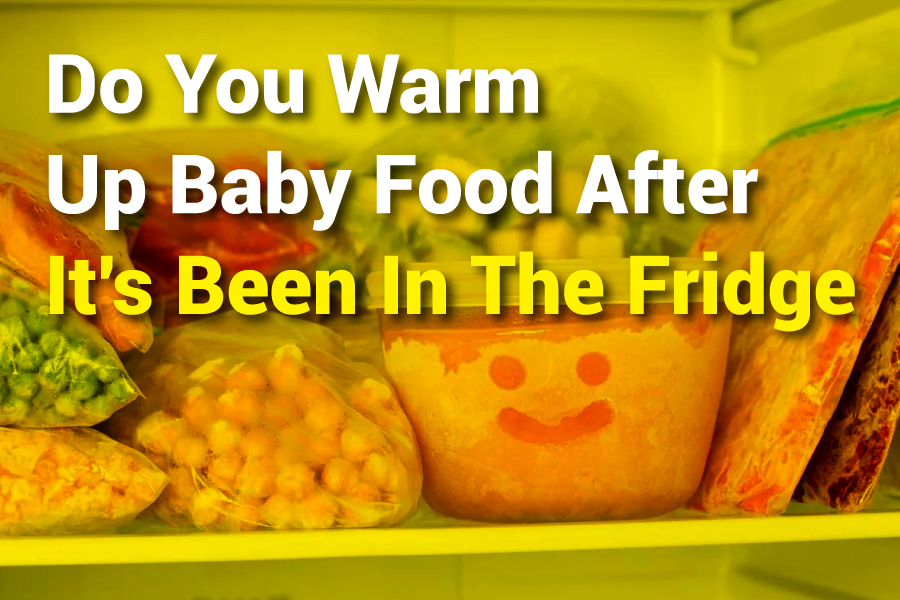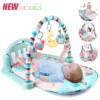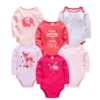Every parent holds one thin thread of concern: that the food they offer their little bundle of joy is both healthy and safe. One of the common questions that arise in this context is, “Do you warm up baby food after it’s been in the fridge?” The question is relevant for checking the temperature at which it is served. It would impact both the safety and the palatability of the food. Baby food, once prepared, is usually stored in the refrigerator to keep it fresh. However, the process of its re-heating gets confused at times. This article will cover how to warm up baby food after refrigeration, covering the safety aspects, methods of warming, and the impact on nutritional content. Whether you are a new parent or just looking to refresh your memory, this guide will give you full insights to ensure your baby’s meals are delicious and, more importantly, safe.
Do You Warm Up Baby Food After It’s Been In The Fridge?
Yes, you should warm up your baby’s food so that it attains the correct temperature for the baby and makes it comfortable to eat. Food that is too cold can be distasteful and mainly comprises digestion tremendously. Reheating ensures that potential bacteria are killed, making the food appropriate to eat.
Why You Need To Warm Up Baby Food After Refrigeration
Warming up baby food after it has been stored in the fridge is a common practice among parents, and for good reason. First, one will have to consider the palate. If the food is warm rather than cold, the chances are that a baby will eat up and enjoy his meals. Cold food is unappealing and might cause them to reject the meal altogether. Moreover, warm foods appear to emanate more aromas that will trigger the baby’s appetite, which will make them want to eat more.
Other than taste, it is also more hygienically made. Past refrigeration only slows the growth of bacteria and doesn’t kill them. Warming up baby food will help your baby avoid some pernicious bacteria that may have multiplied in it while in store. This is much the case when it involves homemade baby food, which isn’t infused with preservatives like those sold in stores.
Of course, there is an issue of the nutritional integrity of the food. While reheating sometimes involves some minimal loss of nutrients, the benefits of warm service normally outbalance the negatives of this process. Most of the food’s nutrients can be retained by applying gentle methods to reheat it, for example, using a warm water bath or a microwave with frequent stirring provided.
It’s also important to note that some babies simply have sensitive stomachs and don’t feel good when eating cold foods. This makes warm foods easier on their digestive systems to avoid problems like colic or gas during the feeding process, which can be uncomfortable for the baby and painful for the parent as well.
Finally, there is the psychological aspect. Mealtime is a time when a parent and child bond. Warming up food can signify a kind of nurturing in that it brings about a feeling of comfort and care. This can further add to the emotional enjoyment of mealtime, making it less stressful.
How To Safely Warm Up Baby Food
Microwave Method
Reheating baby food in a microwave is quick and easy. Just put it in a microwave-safe dish and then heat it in short intervals, frequently stirring, to avoid uneven heating. It could be efficient, but you have to take care not to burn your baby’s mouth due to the formation of hot spots that may form.
Stovetop Method
Stovetop: Put the baby food in a small saucepan and warm over low heat. Afterward, keep stirring to prevent the food from burning or sticking at the bottom. In addition, this will provide even heating. This method is great for controlling the amount of heat used, therefore retaining the texture and nutrients in the food.
Water Bath
The warm water bath is a much gentler method whereby a jar of the baby’s food is placed in another, bigger bowl of hot water. This gently warms up food without the risk of overheating; it’s especially good for really very delicate purees that may lose quality by applying direct heat.
Bottle Warmer
You can also warm up baby food jars or pouches with a bottle warmer if you happen to have one. Just follow the instructions that the manufacturer laid out so that everything will be safely and evenly heated. This would be handy, designed for baby food, so parents can rely on it when in a rush.
Safety Tips
Always check the temperature of the baby’s food before feeding your child. Stir well and test with a small amount to the wrist to make sure it is not too hot. Also never reheat food more than once since repeated heating and cooling will enhance the risk of bacterial growth.
Nutritional Considerations
However, sometimes it does affect the health value of the baby food. Nonetheless, the impact is very minimal. Here are the critical pointers:
Loss in Vitamins: Of course, certain vitamins like Vitamin C do break down with heat. Gentle heating may minimize this effect.
Integrity of Proteins: The proteins remain completely intact when reheated; therefore, you have an assurance that your baby is getting the nutrients.
Texture Changes: Some foods will change texture when reheated, but this is generally fixed by adding a bit of water or breast milk.
Alternative Views Of Serving Baby Food
Though most people warm up baby food, it is usually fed to the baby cold or at room temperature by some. This approach is mostly adopted to save time and to avoid the hassle of reheating. Some babies go well with cold food, especially if introduced gradually. Feeding food at different temperatures also makes the baby flexible in terms of eating, and might make them less of a picky eater in the future.
Another area of consideration would be nutrition. While very minimal amounts of nutrient loss can occur due to heat, serving foods cold retains the overall full nutrition. This becomes especially true in foods with a high amount of very heat-sensitive vitamins or enzymes. This will help parents who want to see maximum retention of nutrients.
In addition, there is the convenience aspect. It is often quite impractical to find a suitable heating source when on the go or during travel. Having a baby accustomed to eating food straight from the refrigerator can, in that regard, really be a godsend. It eliminates a lot of hassle surrounding feeding routines and maintains the diet of the baby, no matter what kind of situation the parents may find themselves in.
Practical Tips For Reheating Baby Food
- Microwave Safety: When heating baby food in the microwave, do so in short intervals and always stir the puree to avoid hot spots. This allows complete heating of the food and ensures it is safe for your baby to consume.
- Heating on the Stovetop: You can also warm up baby food on the stovetop but use very low heat. Constant stirring will help preserve the texture of the food and prevent it from scorching.
- Heating by a Warm Water Bath: A warm water bath is a mild process that helps retain the nutritional values of the baby food. Place the container of food in hot water and let it warm up over a period.
- Testing Temperature: Always check the temperature of the baby food that has been reheated. Stir well and place a small amount on your wrist to see that it’s lukewarm.
Conclusion
Reheating baby food after it has been in the refrigerator is always necessary for safety and being more palatable. Provided with proper methods and temperature checks, you will be capable of making sure that the food of your little one stays as nutritious as it is pleasurable. Warm food is much more appealing. Otherwise, it is much safer too. This may help alleviate some pressure from your mind as a parent during feeding time.
Frequently Asked Questions
Why Should I Warm Up The Baby Food After Refrigeration?
Warming up baby food allows it to be more palatable and safe by breaking down probable bacteria.
What Is The Best Way To Re-Warm Baby Food?
The best methods include using the microwave, stovetop warm water bath, or bottle warmer – whichever one is most convenient and a matter of preference.
Does Reheating Baby Food Destroy Some Of The Nutrition?
While there can be minor losses in nutrient levels, most of the food’s nutrition can be retained by using gentle methods of reheating.
How Do I Know If The Food Is The Right Temperature For My Baby?
Always stir the food well and check a little on your wrist to see that it’s not too hot.
Is It Safe To Reheat Baby Food More Than Once?
It’s best to avoid heating baby food several times since repeated heating and cooling multiply the growth of bacteria.









